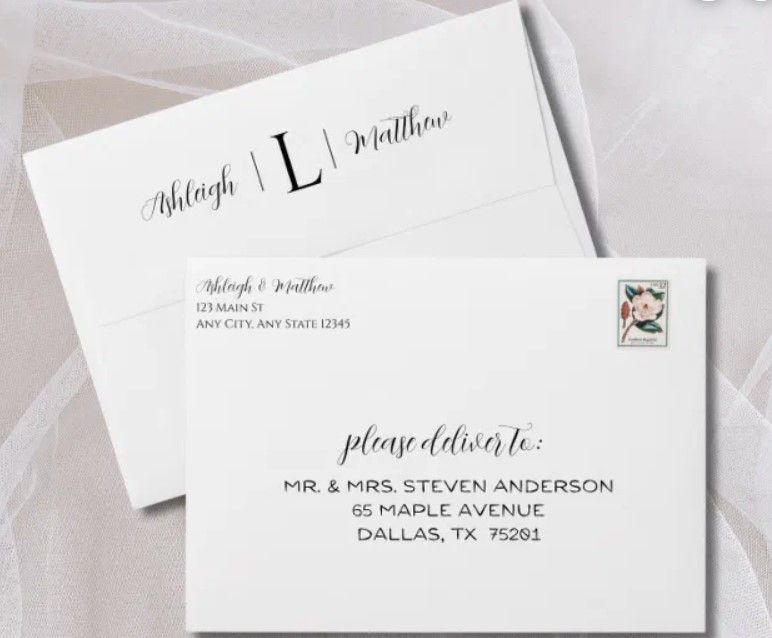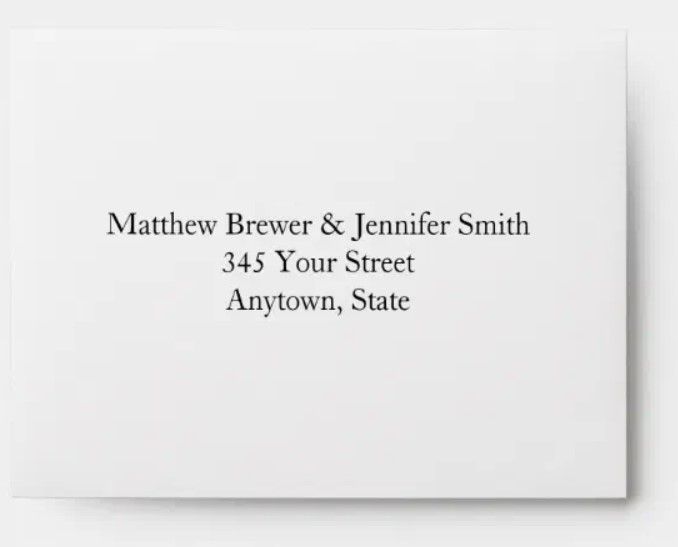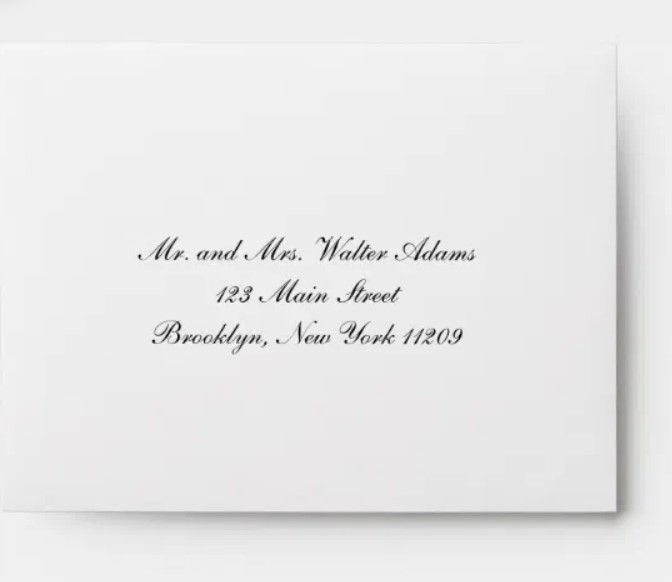Sending out your wedding invitation is a pivotal point in the planning process. We typically recommend sending them out 12-8 weeks prior to the wedding. The exact timing is mainly dependent on the deadline for final guest counts for various vendors you have booked (catering, rentals, remaining stationary needs, etc.). You’ll want to give yourself time to track down lingering RSVP's from guests and work through table assignments.
Addressing wedding invitations is an important task that should be done thoughtfully and in line with etiquette. A formal wedding invitation usually includes an outer envelope with a more personalized inner envelope. Is this completely necessary? No. However, it is always better to err on the formal side instead of informal. If you choose to forego an inner envelope, simply focus on properly addressing the outer envelope. Here is a guide on how to properly address the envelopes:
1. Addressing the Outer Envelope
The outer envelope is the more formal one, and it's important to be proper and respectful when addressing it.
For married couples:
If both have the same last name, you can list them together using the husband’s first and last name
Mr. and Mrs. John Smith
Or if you want to address both the husband and wife equally, you can use both the husband and wife’s first and last names
Mr. John Smith and Mrs. Jane Smith
Or
Mr. John and Mrs. Jane Smith
If both have different last names, you can list either name first based on your preference:
Mr. John Smith and Mrs. Emily Johnson
If one partner has a hyphenated name, list the hyphenated name last:
Mr. John Smith and Mrs. Jane Smith-Johnson
If one partner has a distinguished title, the distinguished title come first:
Doctor John Smith and Ms. Jane Smith
The Honorable Jane Smith and Mr. John Smith
For unmarried couples living together:
Address both people on one line. List the person you are closest to first.
Mr. John Smith and Ms. Emily Johnson
For single individuals:
For a man, use Mr. if he is over 18. Otherwise, no title is necessary
Mr. John Smith OR John Smith
For a woman, use "Ms." if she is over age 18. If she is younger, then use "Miss", it should be spelled out, not abbreviated as an initial.
Ms. Emily Johnson OR Miss Emily Johnson (if she is younger than 18)
If they have a guest, the invitation can be written as:
Mr. John Smith and Guest (or the guest’s name if unknown)
For families with children, when inviting an entire family, the family name or the parents' names should be listed alone. If you’d like to specify which children are invited, start with the parent’s name(s) and then list invited children’s names by order of age
The Smith Family
OR
Mr. and Mrs. John Smith and Family (or the children's names listed on a second line: "Mr. Robert Smith, Miss Emily Smith”
2. Addressing the Inner Envelope
The inner envelope typically has the names of those who are invited, and it is usually more informal than the outer envelope. The purpose of the inner envelope is to clarify who is invited and ensure there’s no confusion.
For married couples:
Mr. and Mrs. Smith
OR
John and Jane
For married couples with different last names:
Mr. Smith and Mrs. Johnson
OR
John and Emily
For a couple with a hyphenated last name:
Mr. Smith and Ms. Johnson-Smith
OR
John and Emily
For a couple with a distinguished title:
Dr. Smith and Ms. Smith OR John and Jane
Judge Smith and Mrs. Smith
For unmarried couples:
Mr. Smith and Ms. Johnson
OR
John and Emily
For a single person:
Mr. Smith OR Ms. Johnson
John OR Emily
Offered a plus one:
Mr. Smith and guest
John and guest
For families with invited children:
John, Jane, Robert, Miss Emily
Addressing Wedding invitations with elegance and grace will start off your wedding in a beautiful way that people will appreciate.



